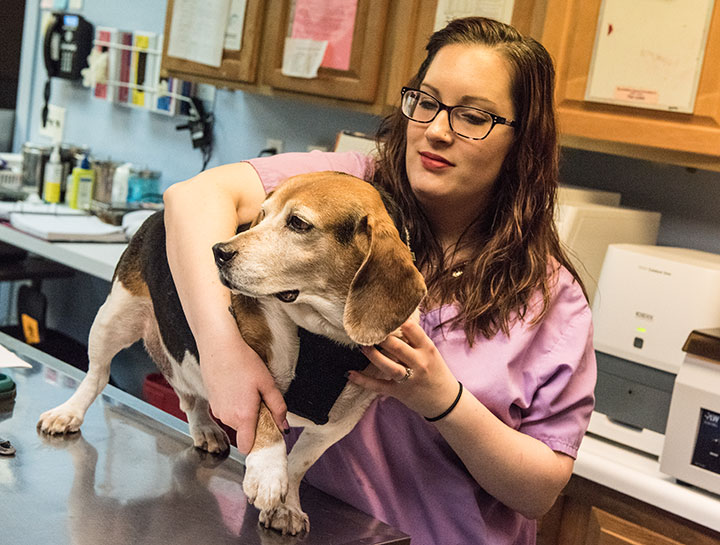What You Need To Know About Cruciate Ligament Disease

Cruciate ligament disease is a commonly diagnosed cause of rear leg lameness in dogs of all sizes.
The cruciate ligament is one of four ligaments that stabilize the knee joint to support weight bearing while walking. It can be partially or fully torn. Injury may be from an acute event such as jumping up or down or from a slip during fast running.
When a full tear occurs, the dog will be extremely lame and not be able to bear weight on the affected leg. Medication can decrease the pain but the dog will still not be able to bear weight. If there is a partial tear, the lameness will be less severe. The dog will have a moderate lameness that will tend to get somewhat better with medication but will become lame again after the medication wears off.
Dogs will full cruciate ligament tears require surgery to stabilize the knee. Dogs with partial tears almost always require surgery as well. Partial tears almost always become full tears over time.
Cartilage injuries are also common with cruciate ligament disease. Torn cartilage in the knee is very painful. The knee joint is inspected for torn cartilage during surgery and any loose pieces are removed.
There are several different methods of cruciate ligament repair. Your veterinarian will choose the method based on size, weight, and level of activity of the dog.
If left unrepaired, a partial cruciate ligament injury will cause arthritis due to chronic inflammation in the knee joint. This leads to increased lameness as the dog gets older. Joint supplements such as glucosamine, chondroitin and hyaluronic acid are used long term after surgery is performed.
The outcome of surgery is generally very good with most dogs returning to normal function.
Written by Howard Rothenberg, DVM, is the Chief of Staff at Goosepond Animal Hospital.
